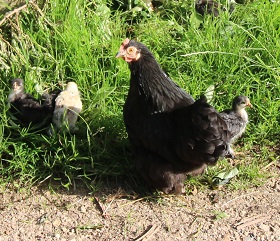Animal Parenting
 Different types of animals interact in different ways with their offspring.
Different types of animals interact in different ways with their offspring.
It is said that animal parenting begins when the egg is being fertilised. Once the young is born, one or both parents will invest their time providing wellbeing to their offspring to assure good health and fitness before they are independent and ready to survive and reproduce. The time it takes for the young to be ready to be independent varies among species.
In mammals, the care is provided almost exclusively by the mother. Maternal behaviour is influenced by a combination of hereditary or instinctive behaviour, learnt behaviour and hormonal factors. Some breeds of sheep, for example, have a much stronger mothering instinct than others. The evidence for the role of learning in maternal behaviour is found mostly in higher primates and rodents. Monkeys that have been artificially reared make very poor mothers compared to animals that experienced good maternal care. This could also explain why beef cattle that are suckled and reared by their mother have a greater maternal instinct than dairy cows that have little experience of mothering, or being mothered, because their calves are removed soon after birth to be reared artificially.
First time, or primiparous, mothers are often more likely to abandon or kill their offspring in many species. This is especially true in pigs - but they usually exhibit normal maternal behaviour with subsequent litters. Another example of learnt behaviour is that primiparous ewes will not accept a lamb whose wool has been washed free of the amniotic fluid, whereas a ewe that has lambed before will. This demonstrates the importance of both the amniotic fluid and prior experience of mothering.
During a sensitive period soon after birth, the mother of a newborn, or several newborns, forms a bond with their offspring as previously discussed. The mother learns to recognise her young mainly by their smell although sight and sound also plays a part. Research has shown that ewes base their recognition of lambs at a distance on vision, in particular learning to recognise the colour and pattern of their lamb’s head and the colour of their wool. At closer range, they rely on smell and these cues are reinforced every time the lamb suckles when the ewe can be seen to sniff the tail and rear of the lamb. The role of vision in horses is not so strong. Changing a foal’s appearance by hooding and bandaging does not interfere with recognition by the mother and blind mares have been known to raise foals showing that smell and sound are the more important cues.
Parental care also involves teaching the young how to hunt and forage for food. Although the drive to find food is an instinctive behaviour, in many species the mother teaches the young this important survival skill. This may include the best places to look and how to access the food. For example, grizzly bears will teach their cubs how to turn over stones and break open crab and clam shells. Sea otters will also show their young how to swim and hunt. Young animals also rely on their parents to show them danger signals and how to avoid predators.
The process of learning from parents has also been observed in many bird species. Galahs reared with Major Mitchell cockatoos have strikingly abnormal behaviour. They retain some galah-like calls but also have cockatoo calls. They may also adopt their style of flying and choice of diet both of which must have been learnt from their parents rather than instinctive behaviour.
Parental care also involves teaching their young migration routes. Again, whereas the need to migrate is undoubtedly an instinctive behaviour, many bird species rely on their parents to show them the way on their first migration. It has been reported that birds such as geese and cranes that have been reared artificially need to be lead by an aeroplane to learn their migration routes.